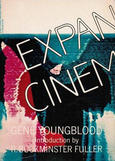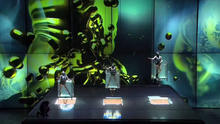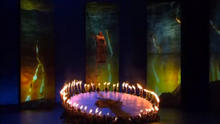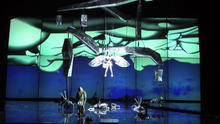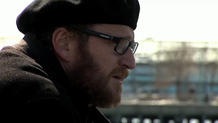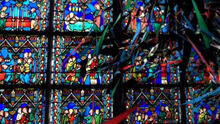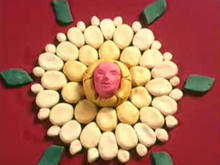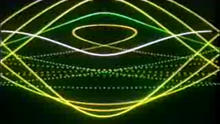Richard Wagner: Götterdämmerung
(2009)staged by theatrical group La Fura del Baus. Götterdämmerung forms the forth and final part in Richard Wagner's Der Ring des Nibelungen cycle.
La Fura dels Baus has to Wagner all the wisdom gained. This time the results have exceeded expectations. "Wagner fits well into our philosophy," said Padrissa today "he would understand the Tetralogy of two ways: predation suicidal in nature, and the man's identity crisis mediatised".
Source: La Fura dels Baus website
In a pre-performance press conference with the Catalan theatre production company La Fura dels Baus, a prestigious Spanish critic asked its chief Carlus Padrissa, whether he was aware that this production is one of the three most important in the history of the Ring, together with those by Wieland Wagner and Patrice Chereau. I will not go that far in my appreciation of La Fura's work, but it is clear that this production is certainly one of the most important of the last few years. It is little wonder, then, that the production attracted so many Wagnerians from all over the world.
Ever since Das Rheingold, La Fura's production has been characterized by the frequent use of video projections, some of great beauty, to the point that the real hero of this production becomes Franc Aleu, the person who created them. At some point during the first three operas though, I had the impression that La Fura has some kind of vacuum phobia and cannot accept the idea of having a only a couple of singers on stage without any other kind of extra presence.
This was particularly exaggerated in Götterdämmerung, where the projections were almost ceaseless, to the point of becoming annoying and distracting. Together with some excellent scenes, such as Siegfried's Funeral (his corpse taken through the theatre on the shoulders of extras, while we were shown the orchestra on a big screen), or the brilliant Brünnhilde's Immolation, others were less successful.
The Gibichungs are shown here as the incarnation of the capitalist society at its worst, and the beginning of Act II with Alberich on a crane far above the stage with Hagen underneath him behind which films of industrial images are projected, loses all the tenebrous mystery that this scene demands. Something similar happens in the scene where the two Valkyries meet, where we miss the intimacy and emotion that the encounter needs.
There are no sets as such, except for stage props which are very well handled but again, this requires lots of people to be on stage, which can be distracting. The costumes are rather arbitrary, but always attractive. Finally though, the Peter van Praet'a lighting is excellent throughout and La Fura finishes the production with a plea to the Gods to let humans live out their loves.
(José M Irurzun)
Source: MusicWeb
